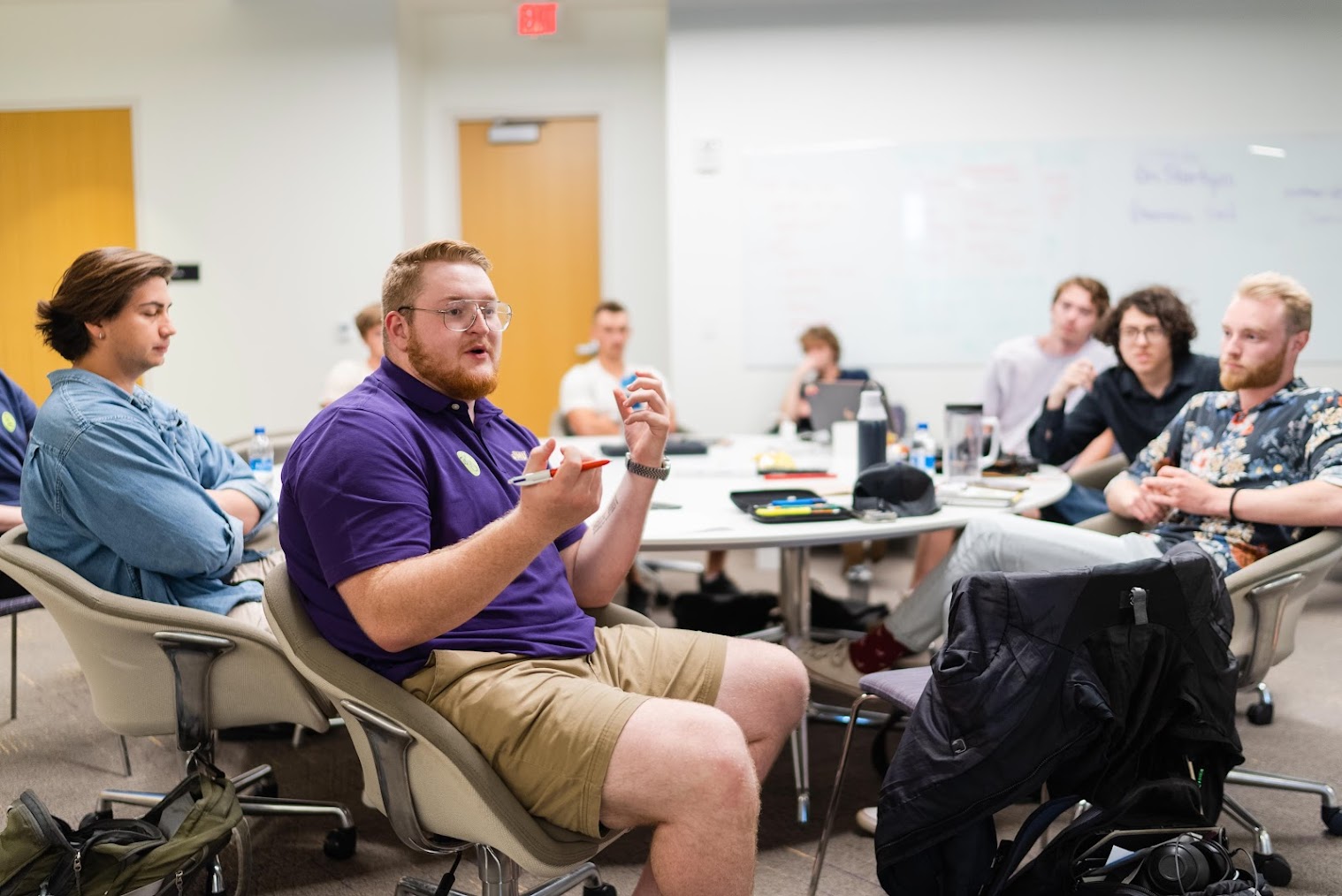Introduction:
In our quest for knowledge, we often find ourselves limited by the boundaries of our thinking. Horizon thinking, a term that alludes to the limitations of our cognitive scope, prevents us from expanding into new paradigms and reaching innovative solutions. However, the question arises: Can we overcome these limits? Is it possible to stretch the horizons of our understanding and propel ourselves beyond the confinements of traditional thought?
This article aims to explore the concept of horizon thinking, delve into its constraints, and consider practical approaches to transcending these boundaries. We will discuss how embracing new ways of thinking, utilizing technology, and fostering interdisciplinary collaboration can help break the chains of conventional mindsets.
Understanding Horizon Thinking
Horizon thinking refers to the mental models and cognitive frameworks we adopt when making decisions or solving problems. These mental models are shaped by our knowledge, experiences, culture, and environment. Just as the horizon defines the limits of what we can see in the physical world, horizon thinking confines the scope of our ideas and perceptions.
While horizon thinking has its benefits, particularly in helping us navigate familiar challenges, it can also be a double-edged sword. By fixating on conventional methods or established paradigms, we risk overlooking alternative solutions or failing to recognize new opportunities. Therefore, it becomes crucial to question and expand the boundaries of our thinking.
The Problem with Fixed Horizons
The main issue with horizon thinking is that it creates a fixed framework through which we view the world. This framework, although based on logic and experience, can become a barrier to creative problem-solving. Some common pitfalls of horizon thinking include:
- Cognitive Biases: We are naturally inclined to stick to familiar patterns, leading to biases like confirmation bias, where we only seek information that aligns with our pre-existing beliefs. This can hinder innovation and prevent us from considering fresh perspectives.
- Siloed Thinking: Many problems today are complex and multifaceted, but horizon thinking often leads to narrow, siloed thinking. For instance, in business, companies may solve problems using internal models without considering external innovations or interdisciplinary solutions.
- Resistance to Change: Horizon thinking often leads to complacency. When we reach a certain level of understanding or success, we may resist changing our approach, assuming that what worked in the past will continue to work in the future. This mindset limits growth and adaptation, which are essential for progress.
- Short-term Focus: A horizon often represents a distant point, but in horizon thinking, it is easy to focus only on immediate, short-term goals, ignoring long-term implications. This shortsightedness can lead to poor decision-making and missed opportunities for sustainable growth.
Expanding Our Mental Horizon
To overcome the limits of horizon thinking, we must be willing to stretch our mental boundaries. How can we break free from the restrictive confines of conventional thinking and cultivate a more expansive mindset? There are several approaches that can help us move beyond our current limitations.
1. Embrace Divergent Thinking
Divergent thinking, a concept coined by psychologist J.P. Guilford, encourages individuals to explore multiple possible solutions to a problem, rather than fixating on a single answer. This mode of thinking fosters creativity and innovation, allowing individuals to break free from the constraints of linear or horizon-bound thought patterns.
By engaging in activities that encourage divergent thinking—such as brainstorming, mind mapping, or freewriting—we can challenge our cognitive biases and push the boundaries of what we consider possible. Divergent thinking not only helps us generate new ideas but also forces us to view problems from multiple perspectives, opening the door to more holistic solutions.

2. Cross-Disciplinary Collaboration
Another powerful way to overcome the limits of horizon thinking is through cross-disciplinary collaboration. By working with individuals from different fields of expertise, we can break down silos and discover novel approaches to complex problems.
For example, consider the field of artificial intelligence (AI). AI researchers often collaborate with experts in neuroscience, psychology, and linguistics to understand how the human brain processes information. These interdisciplinary collaborations not only advance our understanding of AI but also help solve problems that were previously considered intractable.
Interdisciplinary collaboration fosters creativity by introducing diverse perspectives and methodologies that can challenge our assumptions and open new avenues for exploration. By bringing together people with different backgrounds, we create an environment where innovative ideas can flourish, and rigid mental horizons can be expanded.
3. Adopt Systems Thinking
While horizon thinking often focuses on linear, cause-and-effect relationships, systems thinking encourages us to view problems as part of a larger, interconnected system. Systems thinking emphasizes the relationships and interdependencies between various components of a system, rather than isolating individual elements.
For example, in tackling global climate change, a systems approach recognizes the interconnectedness of environmental, economic, and social factors. Rather than focusing solely on carbon emissions, systems thinking encourages us to consider the broader context—such as renewable energy technologies, sustainable agriculture, and social behaviors—that contribute to the issue.
By adopting a systems thinking approach, we are able to step outside the confines of traditional horizon thinking and consider the bigger picture. This can lead to more comprehensive, long-term solutions to complex challenges.
4. Leverage Technology and Artificial Intelligence
One of the most powerful tools for overcoming horizon thinking is technology. Advances in artificial intelligence, machine learning, and data analytics have the potential to revolutionize how we approach problem-solving and decision-making.
AI algorithms are capable of analyzing vast amounts of data and identifying patterns that may not be immediately obvious to human observers. By leveraging AI tools, we can uncover hidden insights and make more informed decisions. Additionally, AI can assist in optimizing complex systems, providing us with the ability to model and simulate scenarios that would otherwise be too complex to predict.
Moreover, technology enables us to communicate and collaborate with individuals across the globe, further breaking down the barriers of traditional thinking. The digital age has created a hyper-connected world where ideas can flow freely, and innovation can happen at an unprecedented pace.
5. Foster a Growth Mindset
Finally, cultivating a growth mindset is essential for overcoming the limits of horizon thinking. A growth mindset, as coined by psychologist Carol Dweck, is the belief that intelligence and abilities can be developed through effort and learning. People with a growth mindset are more likely to embrace challenges, learn from failures, and seek out opportunities for personal and intellectual growth.
Adopting a growth mindset allows us to approach problems with curiosity and openness, rather than fear or defensiveness. It encourages experimentation and the willingness to venture outside of our comfort zones. By fostering a growth mindset, we can gradually expand the boundaries of our thinking and embrace new ways of approaching problems.
Overcoming the Limits of Horizon Thinking in Practice
Case Study 1: Space Exploration

One of the most exciting and inspiring examples of overcoming horizon thinking is the field of space exploration. For centuries, humanity was limited by the belief that space travel was beyond our reach. The idea of venturing beyond the Earth’s atmosphere was once considered a fantasy.
However, through a combination of technological innovation, collaboration, and systems thinking, we have made significant strides in space exploration. The Apollo moon landings, the International Space Station, and private-sector ventures like SpaceX demonstrate the power of overcoming the limits of horizon thinking. These milestones were only made possible by pushing the boundaries of what was once thought impossible, challenging traditional views, and adopting new technologies and interdisciplinary approaches.
Case Study 2: The Rise of Renewable Energy
Another example of transcending horizon thinking is the development and adoption of renewable energy technologies. For much of the 20th century, fossil fuels were considered the dominant and most reliable energy source. However, the growing awareness of environmental concerns and the limitations of fossil fuels forced us to reevaluate our energy paradigms.
Today, renewable energy sources such as solar, wind, and hydroelectric power are no longer seen as niche alternatives but as viable solutions to the global energy crisis. The transition to renewable energy has been driven by advances in technology, new business models, and a collective effort to think beyond the traditional fossil fuel paradigm.
Case Study 3: Artificial Intelligence in Healthcare
AI is also revolutionizing the healthcare industry by enabling more accurate diagnoses, personalized treatment plans, and predictive analytics. In the past, healthcare systems were limited by the available medical knowledge and human capabilities. However, AI tools can now analyze vast amounts of medical data, uncover trends, and offer insights that were previously beyond our reach.
The use of AI in healthcare demonstrates how technology can break the limits of horizon thinking and open new possibilities for improving patient care, advancing medical research, and addressing global health challenges.
Conclusion
The limits of horizon thinking are real, but they are not insurmountable. By embracing divergent thinking, fostering interdisciplinary collaboration, adopting systems thinking, leveraging technology, and cultivating a growth mindset, we can transcend the boundaries of conventional thought and unlock new levels of creativity and innovation.
As we continue to face increasingly complex and global challenges, the ability to think beyond our mental horizons will be critical for finding solutions that are both sustainable and transformative. It is only by expanding our thinking that we can pave the way for a brighter, more innovative future.























